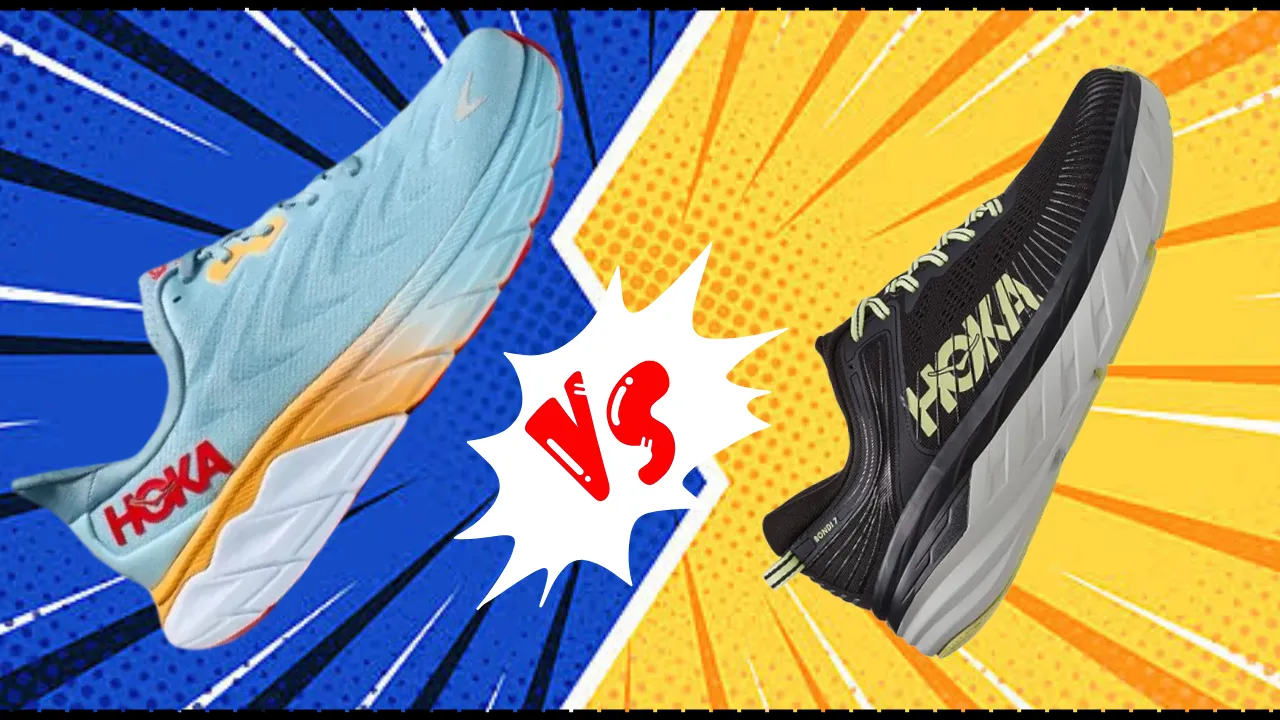If you’re a runner searching for your next pair of shoes, you may be trying to decide between the Hoka Arahi 6 stability shoe and the Hoka Bondi 7 maximum cushioning shoe.
Both offer the signature Hoka cushioning, but they are designed for different types of runners and training needs.
This in-depth comparison looks at the key features and performance of each model to help you choose the right Hoka for your feet!
Similarities And Differences Between Arahi 6 And Bondi 7:
| Feature | Hoka Arahi 6 | Hoka Bondi 7 |
|---|---|---|
| Launched In | 2022 | 2020 |
| Stability | Moderate | Neutral |
| Flexibility | Moderate | Low |
| Sizing | 7-14 (M), 7-12 (W) | 7-14 (M), 7-12 (W) |
| Weight | 9.4 oz (M), 8.1 oz (W) | 10.8 oz (M), 9.2 oz (W) |
| Cushion | Moderate | Maximum |
| Outsole | Rubber | Rubber |
| Midsole | EVA Foam | EVA Foam |
| Upper | Engineered Mesh | Engineered Mesh |
| Retail Price | $140 | $170 |
Features Comparison: Arahi 6 Vs Bondi 7
So far we’ve given you an overview of both shoe models in the comparison table. It is now time to see how both brands come together in feature comparison.
1) Materials
The Hoka Arahi 6 uses a combination of engineered mesh in the upper, EVA foam in the midsole, and rubber in the outsole.
The engineered mesh creates a breathable and flexible upper, while the EVA foam midsole provides responsive cushioning. The rubber outsole is made with Vibram Megagrip technology for durability and traction.
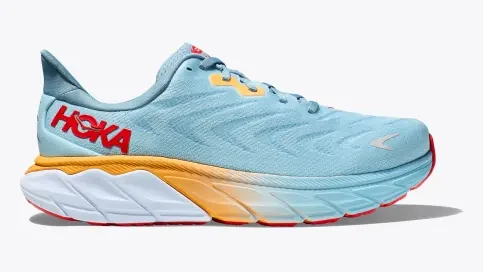
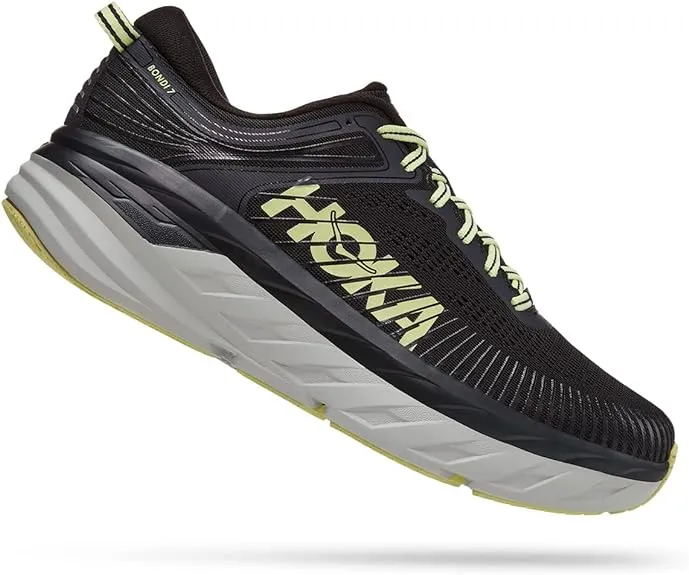
The Hoka Bondi 7 also uses an engineered mesh upper for breathability, EVA foam in the midsole for plush cushioning, and a rubber outsole.
The midsole foam is thicker than the Arahi 6 for maximum shock absorption. The outsole rubber also features strategically-placed grooves for flexibility in the forefoot.
2) Durability
The Arahi 6 offers good durability thanks to the Vibram Megagrip outsole rubber which can withstand many miles of use.
The EVA foam midsole will compress over time but should remain responsive for 250-300 miles. The upper mesh is fairly sturdy but may show some wear with heavy use.
The Bondi 7 has excellent durability due to the thick midsole foam which resists breakdown.
The outsole rubber is also very hardy and can last over 500 miles for many runners. The upper mesh holds up well, with few complaints of tearing or damage to this model.
3) Fit
The Arahi 6 runs true to size for most runners, with a secure heel counter and a moderately snug midfoot fit. The toe box offers adequate room for toe splaying while running. The upper mesh provides a flexible and breathable fit. This shoe fits neutral to moderate overpronators best.
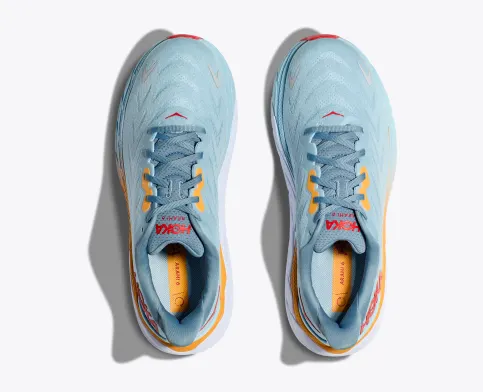
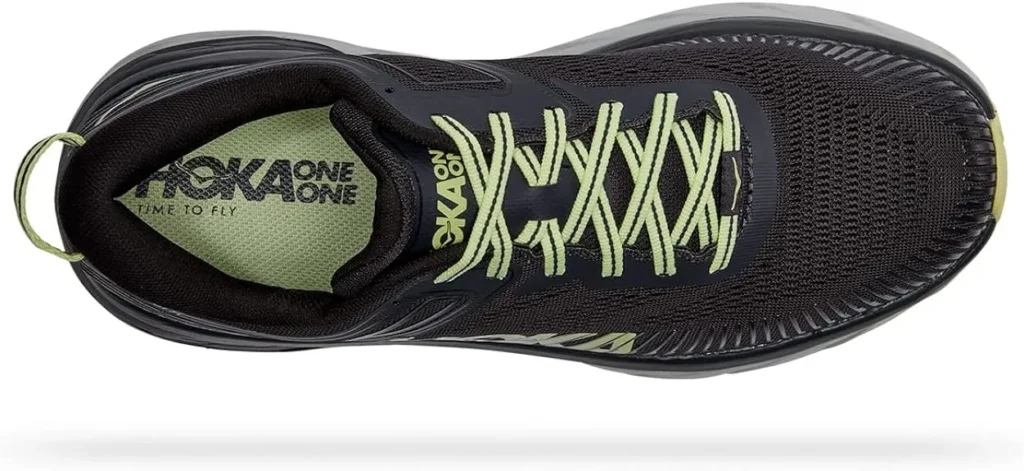
The Bondi 7 also runs true to size but has a wider fit throughout the shoe. The midfoot has less structure but the heel counter keeps the foot stable. The toe box is more spacious for maximum comfort. The mesh upper adapts well to wider feet. This shoe is best suited for neutral pronators.
4) Stability
The Arahi 6 offers moderate stability for those needing mild pronation support. The midsole is firmer on the medial side to prevent inward rolling. The upper heel counter also adds stability during the gait cycle. While not a motion control shoe, it does reduce excessive pronation.
The Bondi 7 has a neutral level of stability best suited for neutral runners. The midsole is extremely cushioned but provides less structure for pronation control. The wider outsole platform adds some stability but runners needing support should choose the Arahi model instead.
5) Cushioning
The Arahi 6 has a moderately cushioned EVA foam midsole with a 5mm heel drop. While providing a comfortable underfoot feel, the foam is responsive and does not feel overly soft. Cushioning remains consistent even at faster paces during runs.
The Bondi 7 features maximum cushioning with a plush EVA foam midsole and a 4mm drop. The thick cushioning absorbs impact comfortably and adapts well to any pace or distance. The wide platform also maximizes stability in the softer foam.
6) Value for Money
The Arahi 6 costs $140, providing a durable and supportive shoe for mild to moderate overpronators. The combination of cushioning, flexibility and stability makes this shoe suitable for daily training runs. The value is on par with similar running shoes in this category.
The Bondi 7 retails for $170, which reflects the high-quality construction and maximum cushioning.
While expensive, the superior comfort and durability justify the price for runners wanting a luxurious feel. It provides excellent value for high-mileage neutral runners.
Performance Comparison: Hoka Bondi 7 Vs Arahi 6
Here we will analyze both Bondi 7 and Arahi 6 performances to see who outperforms the other.
1) For Walking
The Arahi 6 performs well as a walking shoe thanks to the flexible upper and stable midsole. The moderately cushioned foam keeps feet comfortable without feeling overly squishy. The shoe also provides the needed midfoot support for low arches when walking long distances.
The Bondi 7 also makes a comfortable walking shoe with its plush cushioning absorbing hard impacts from the ground. The mesh upper adapts well to swelling feet when moving all day. However, the soft midsole lacks adequate arch support for some walkers compared to the Arahi.
2) For Running
As a stability running shoe, the Arahi 6 matches up well with everyday training runs. The EVA foam provides consistent, moderately soft cushioning at any pace while the support systems reduce strain on knees and joints. The grippy outsole also gives confidence on wet or slippery surfaces.
The Bondi 7 truly shines as a long-distance running shoe thanks to the maximum cushioning. The responsive midsole softens hard impacts from repeated foot strikes over the miles.
The rockered design also encourages a smooth transition through the gait cycle. However, the softness can take some adaptation for shorter, faster runs.
3) For Plantar Fasciitis
The Arahi 6 can aid runners with plantar fasciitis thanks to the moderate stability reducing strain on the arches. The integrated guidance system also minimizes excess inward foot rolling during foot strikes. The cushioned heel lessens impact while the responsive midsole eases pressure points.
The Bondi 7 relieves achy feet from plantar fasciitis with its plush cushioning from heel to toe. The soft landings prevent jarring forces from aggravating the fascia while the roomy toe box removes pressure on the forefoot. The wide platform also helps prevent overpronation and irritation.
4) For Standing All Day
The Arahi 6 holds up relatively well for all-day standing with its responsive cushioning but lacks the plush comfort needed for lengthy hours of stationary.
The supportive midsole does help maintain neutral alignment to avoid developing aches in the arches or joints. Overall performance is moderate for extended standing.
The Bondi 7 is a top choice for standing long hours thanks to the thick cushioning absorbing constant pressure and shock. The wide platform keeps feet aligned comfortably without medial/lateral strain.
The roomy toe box also prevents cramping during long periods of stationary standing compared to the Arahi.
Final Verdict:
Overall, the Hoka Arahi 6 is the better choice if you need stability for pronation or plantar fasciitis along with cushioning for everyday runs.
In contrast, the Hoka Bondi 7 maximizes comfort better as a specialty shoe for recovery runs, long distances, or extended time on your feet – but only suits neutral runners. Consider your running needs and foot type, before making that final call.
If you still have any queries/doubts feel free to ask us in the comments down below.

